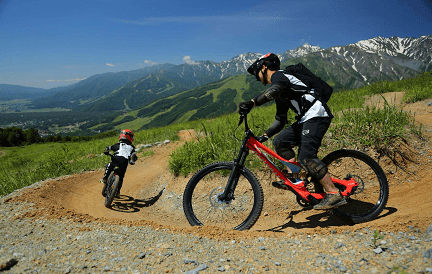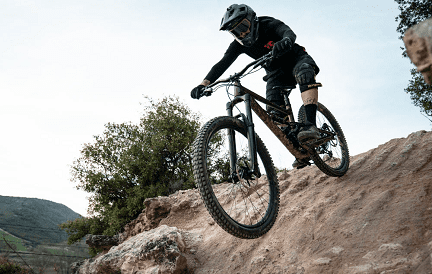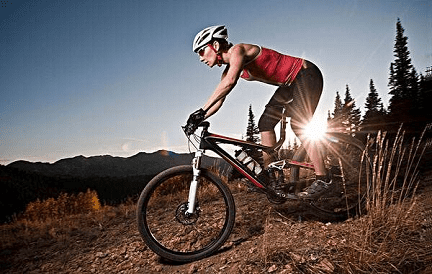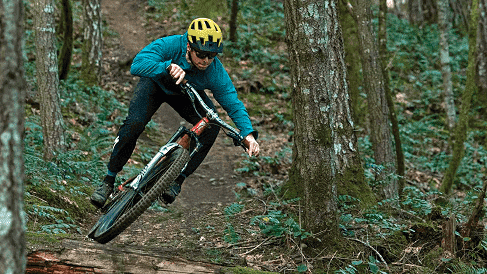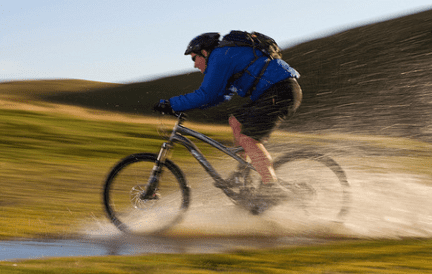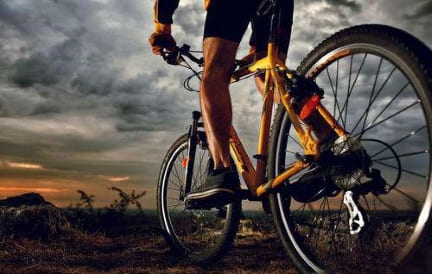One of the most wow aspects of carbon frames is the weight savings over other frames. Also, If you are 5’6′ or taller, you definitely need a 29er wheels to fit you. So, keep reading if you need to know some mountain bike with 29 carbon wheels.
- Part 1: Several Things You Should Know about 29er Bikes
- Part 2: Guide to Buy 29er Bike
- Part 3: Advantages of Carbon Material
- Part 4: 29 Carbon Wheels Products
- Part 5: Frequently Asked Questions
- Part 6: Summary
Part 1: Several Things You Should Know about 29er Bikes
To understand 29er mountain bikes, you need to know what a 29er bike is and what makes them different from other mountain bikes. 29er bikes, also called two-niners and 29′′ MTBs, are mountain bikes with 29-inch wheels. They are also called 29er bikes. They have wheels that are 29 inches wide (with a tire mounted). 29′′ MTB wheels are also the same diameter as a 700c road bike wheel, which is about the same length.
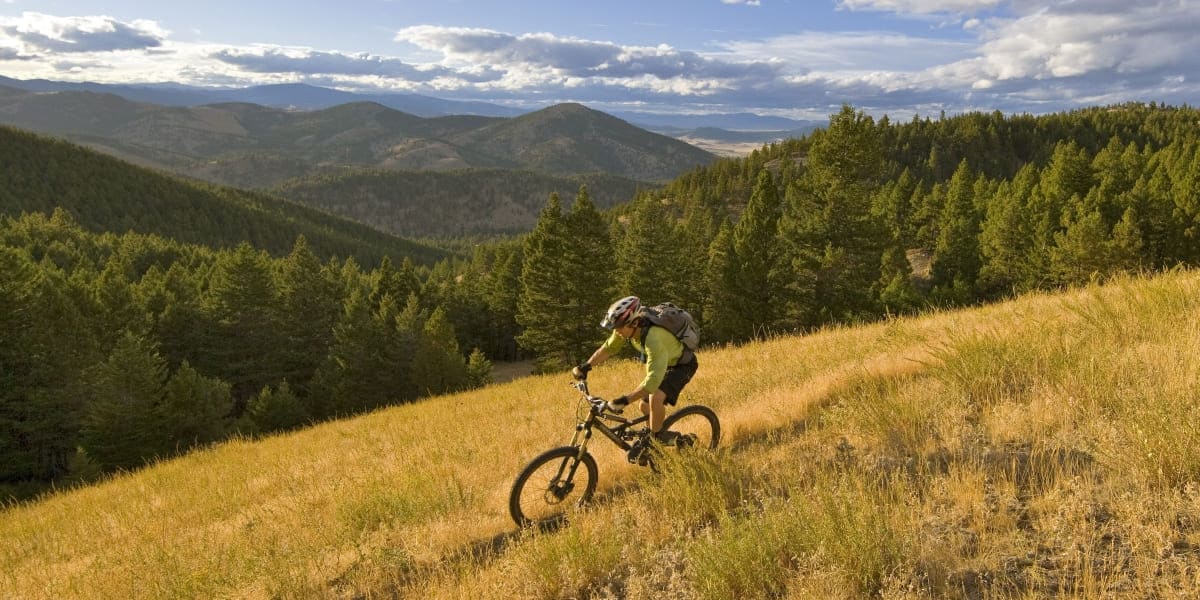
-
What is the Use of 29er Bikes
All kinds of mountain biking disciplines and competitions use 29ers, which are also used for fun riding
29-inch mountain bikes are one of the most popular types of mountain bikes, and they’re becoming more and more popular with professional MTB riders as well. Even though 29ers are best for racing, amateurs and newcomers to mountain biking can benefit from better traction and stability. 29ers can also be used in a variety of ways. You’d be hard-pressed to find a trail that a 29er couldn’t handle, making them a good choice for cyclists who want to ride a variety of mountain bike races.
-
Pros and Cons of 29er MTB
| Pros | Cons |
| Great for going over rocky terrain. | It’s more difficult to jump and move around in the air. |
| On rough terrain, there is less bucking and smoother flow | Compared to the 27.5″ MTB, the acceleration is slower. |
| Increased traction and grip as a result of the increased tyres contact | The weight of larger wheels is generally higher. |
| MTBs with bigger wheels are better at going up hills than smaller ones. | Super-tight corners make it more difficult to ride. |
-
1.3 Who Should Use 29er Bikes
Many people can get a good fit on a 29er, but there aren’t as many sizes for short (male or female) people. Why?
The main problem is the clearance to stand over. A 29er is usually taller than a 26-inch wheel mountain bike of the same size. It may be too tall for small people to ride. Toe overlap with the bigger wheel, and the handlebar’s wrong height could also be a problem for shorter riders. In fact, most 29ers come in medium to large and extra-large frames, but small and women’s-specific frames are only starting to get a lot of attention. Even though you’re short, a 26-inch mountain bike is still likely to be better for you. If you’re taller than 5’6″, you should find a 29er wheels model that fits you. It will be easier for people who are more than 6 feet tall to ride a 29er because of its size and how the frame is built.
Part 2: Guide to Buy 29er Bike
Choose a 29er like you choose any other bike: Before you start riding, think about what you want to do with the bike. Not all 29ers ride the same. Some are lighter, faster, and more agile than others, as with any bike. Some 29ers are made for racers, and others for occasional riders who want one bike to do a lot of different things for them. Hardtail mountain bikes are the most common type of bike with 29-inch wheels right now (bikes with front suspension only). Full-suspension models are becoming more common as suspension and frame designs get better.
Make sure you know that you’ll need more than bigger wheels to make your bike better if you want to upgrade it. Unfortunately, 26-inch and 29-inch wheels can’t be used on the same frame because the frame and suspension are made to fit a certain wheel size. A knowledgeable person or another speciality bike shop can help you figure out how the price of a good bike compares to its quality and performance. Narrow your choices down to 2 or 3. Make sure you take one for a spin to see which one feels best.
Part 3:Advantages of Carbon Material
Ten years ago, carbon fibre was used in bikes because it was high-tech. Carbon fibre is not just carbon but a mixture of carbon elements bonded together and reinforced with epoxy resin after they are woven together. This is called carbon fibre. In the early days of carbon fibre, the epoxy resin used would even break down in the sun because of the way it was made. With the rise of technology, the flaws in this great material are getting better and better. High-quality carbon fibre is used in the German K frame. This carbon fibre is stronger than steel for a lifetime, and it is strong enough to last a long time.
-
3.1 Advantages of Carbon Material
Carbon fibre frames are “lightweight, stiff, and impact absorbing.” However, maximizing carbon fibre performance appears to be a technical challenge, and the grade of carbon fibre materials varies widely. Bike frame manufacturers are unlikely to use high-grade carbon fiber due to expense. Despite these issues, the carbon fibre frame offers advantages over conventional materials. It can produce 8-9kg bikes. This carbon fibre lightweight bike shines when ascending a hill, and the ascent is smooth.
-
Make a frame that isn’t too heavy
A carbon fibre frame is constructed by piling carbon fibres in the opposite direction of tension to obtain strength. The carbon fibre frame is very light because of its density and high tensile strength.
-
Excellent shock absorption
Carbon fibre is utilized to construct exercise-specific artificial legs for the crippled. Make bikes without shock absorbers using their high shock absorption. For example, SCOTT’s ELEVATED frame is famous. However, each manufacturer’s quality varies greatly, and some are quite difficult to judge before riding.
-
Numerous frame configurations are possible.
Carbon fibre is formed by spreading a fibre sheet on a mould and then pouring it into resin and burning it. It can be formed into a variety of frame shapes.
-
3.2 Disadvantages of Carbon Material
-
Complicated stress calculation
The carbon fibre frame has high tensile strength but low shear strength. Moreover, complex stress calculations (longitudinal and lateral stiffness) are necessary during processing, and the carbon fiber sheets are superposed and produced accordingly. The processing technology varies between manufacturers, so buy products from reputable and experienced manufacturers.
-
Changing the size is difficult.
Moulding makes it hard to change the size after the mould is done. You cannot fulfil requests of varying sizes after the mould is done.
Part 4: 29 Carbon Wheels Products
-
Juliana Maverick ($4946)
Our first recommendation for carbon MTB wheels 29 is the Juliana Maverick. For women who enjoy mountain biking, this is a good option. Juliana Maverick has many great features, like 140mm of rear travel and a RockShox Lyrik Ultimate 150mm fork that lets you speed down the trail while still having full control. There is a good suspension on the Maverick, making it feel lighter on the climbs. Also, the total weight of the bike is about 30 pounds. It also had a pro-level fork, shock, and wheels, which will help you keep going as other people with this bike sped over obstacles in their way. Plus, the Maxxis Minion DHR2 tyres have a lot of grips, which makes for a great ride even when the ground is slippery and wet.
-
Juliana Maverick Frame Details
The Maverick is available in three different sizes: small, medium, and big. In comparisons to other women’s mountain bikes like the Canyon Spectral WMN CF 8.0, the Liv Intrigue Advanced 1, and the Scott Contessa Genius 910, the Maverick’s sizing is generous, and the Maverick is the longest in all sizes.
Furthermore, you will like the simple colour scheme, clean lines, and neat details of the carbon frame. This model is constructed using the company’s ‘Carbon C’ material, which is equivalent in strength to the more expensive ‘Carbon CC’ material but significantly heavier.
The Maverick’s frame is the most aggressive on a test, with the longest reach, wheelbase, and a relatively low bottom bracket for confident descents.
The twin-link VPP suspension system on the Santa Cruz stands out, with the shock partially concealed under the seat tube and behind the swingarm. A little guard protects the Fox DPS damper from grit spraying up from the back tyres, which is a lovely touch but complicates sag adjustment and maintenance.
The shock is attached to the lower link through an integrated flip-chip that allows for selecting high or low’ geometry settings.
While the bike comes with 29 wheels, it is also compatible with 650b wheels and tyres up to 2.8 in diameter (in which case Juliana recommends using the High setting).
-
Santa Cruz Blur XC X01 RSV ($8906)
We will recommend the next best carbon mountain bike wheels 29 is Santa Cruz Blur XC X01 RSV. This bike still has 100mm of travel on each end, but it also has a modern bike’s features.
The Blur is different from other bikes in its class because the rear suspension works to keep pedal bob at bay. For stability, the leverage curve has been lowered. Therefore, the chain doesn’t have as much of an effect on how much suspension you can move.
-
Santa Cruz Blur XC X01 RSV Frame Details
A linkage-actuated single-pivot is what Santa Cruz has built instead of its VPP system, which doesn’t have any rear pivots. Instead, the rear stays bent and drives the shock through an alloy link. This new system is a lot lighter than the previous Blur. After the stock 34t chainring, the main pivot is just behind it. Chainstays and seat stays have different shapes molded into them to help clear tyres and keep the bike from flexing too much.
Santa Cruz’s linkage has a lower leverage ratio so that the bike doesn’t slam when you pedal. Therefore, this keeps the bike from slamming down when you pedal. It will make it easier for the pedals to go back because the suspension will be more active. The pivots and the Reserve wheels and frame triangles come with a lifetime warranty from Santa Cruz, which is very good. Furthermore, there’s room in the front triangle for two water bottles, with more bosses on the down tube. Also, there’s a small chain guide to keep everything in place, and both the down tube and chainstays have rubberized protection to keep them safe.
-
Trek Fuel EX 9.7 ($4500)
The Trek Fuel EX 9.7 29 surprised many people in terms of features and value for money. Normally, in-demand brands like Trek come with greater pricing, especially on higher-end versions with carbon frames.
-
3.3.1 Trek Fuel EX 9.7 Frame Details
Our last recommendation for carbon mountain bike wheels 29 is Trek Fuel EX 9.7. It’s been a long time since Trek has used carbon, and its OCLV Mountain Carbon is what the Fuel EX 9.7 is made of. In comparison to many other brands, the tubes on this one are mainly straight. The top and bottom tubes are quite straight. Without the Knock Block device integrated into the headset, an accident could result in fork-crown hits on the down tube. This bike is a keyed frame, spacer, and stem system.
When the bike is struck, this prevents the fork from turning. The frame is also equipped with the necessary protection for the down tube and chainstays. Cables are routed internally using clamped stops. With 29-inch carbon wheels, The S size comes in both wheel sizes, so you can pick which one you like best based on your needs and preferences. Furthermore, Trek’s ABP (Active Braking Pivot) system is a hybrid between a single pivot and a four-bar system. It features a robust chainstay and seatstay connected by a pivot at the rear axle
Part 5: Frequently Asked Questions
- Is it possible for a short person to ride a 29er?
That’s good news for shorter bikers, as the larger wheels of a 29er provide compelling benefits. They need more effort to start, but they maintain a higher pace, provide better traction, and smooth out difficult terrain.
- Is it possible to use 29er wheels on a 26-inch bike?
It is absolutely possible to install a 29er wheelset to a 26-inch bike and provide some big improvements. Depending on your 26′′ bike’s geometry, you may need to use thinner tires to increase clearance. One thing to keep in mind while switching from 26′′ to 29er wheels is toe overlap with the front wheel.
When you steer sharply with your crank at the 3 o’clock position, your toes may seize on the front wheel. You’ll become accustomed to this with time, but begin slowly and steadily, making sure to adjust your feet for sudden twists.
- Does a 29er Bike Require Any Maintenance to Operate?
Like any off-road bike, your 29er will get beat up. To keep your bike in functioning order, you need frequently inspect and maintain its components.Before riding, inspect and clean your suspension, chains, brakes, and tires, then wash your bike after filthy trails.If you can’t do any of these things, your local bike shop can help.
- Is carbon good for a bike?
By layering carbon in a specific way, the frame can be both stiff and flexible at the same time, which is perfect for a bicycle. On the other hand, carbon dampens vibration better than aluminium because of its material properties. It adds to the comfort factor.
- Do carbon bikes break easily?
Carbon bikes won’t break easily because they are made of strong materials.
Part 6 Summary
29-inch mountain bikes are one of the most popular mountain bikes. 29′′ MTB wheels are the same diameter as a 700c road bike wheel, which is about the same length. If you’re short, a 26-inch mountain bike is likely to be better for you. If you’re taller than 5’6, you should be able to find a 29er model that fits you.
Furthermore, the carbon material is stronger than steel for a lifetime and is strong enough to last long. The carbon material is formed by spreading a fiber sheet on a mold and then pouring it into the resin. Also, the carbon frame is very light because of its density and high tensile strength. 29er wheels can be installed on a 26-inch bike and provide some big improvements. Moreover, carbon frames are described as “lightweight, strong, and shock-absorbing.” A carbon of the highest quality is used in the German K frame. Due to its density and excellent tensile strength.

